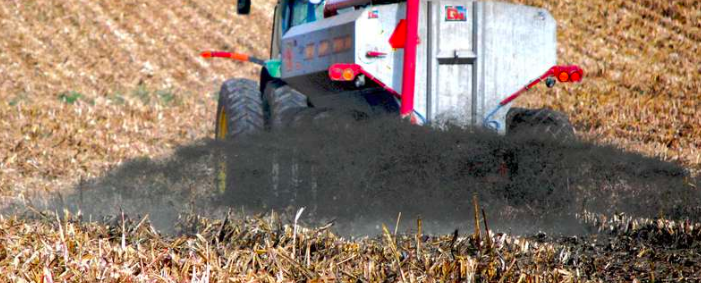
Soil bacteria have found how to combine the useful with the pleasant. Rather than simply degrading antibiotics that can harm them, they eat them! Sulfamethazine and tylosin are particularly preferred.
Production animals are often raised in groups nowadays, which favors the transmission of bacterial infections that are harmful to the farmer. To reduce this risk, many farmers preventively give antibiotics to their animals, even if they are healthy. These substances are largely excreted in the feces . They are found in the manure then, occasionally, spread on many fields.
Edward Topp of Agriculture and Agri-Food Canada has been trying for years to understand the long-term consequences this practice can have onsoil bacteria. Indeed, faced with prolonged exposure to antibiotics , these bacteria tend to develop resistance through, among other things, the establishment of mechanisms to either degradetoxic molecules , or to evacuate quickly out of the body.
With colleagues from Canada and France, Edward Topp has discovered a new mechanism of resistance . A bacterium of the genus Microbacterium degrades antibiotics used by many veterinarians, sulfamethazine and tylosin… to feed! This fact has just been reported in the Journal of Environmental Quality ( JEQ ).
Antibiotics that promote the growth of bacteria
For 14 years, experimental plots received between 0 and 10 mg per kg of soil each year of antibiotics (a mixture of sulfamethazine, tylosin and chlorotetracycline). In order to understand the impact that these actions have had on microbial communities , a virgin field of all experience has recently been treated at the same time as the others.
The researchers then followed the evolution of the concentrations of each drug in the soil. Surprisingly, sulfamethazine and tylosin disappeared 5 times faster in the plot that received 10 mg antibiotics per kg of soil annually since 2005 than in the control field. Over time, the annual application of these drugs has favored the growth of bacteria that can degrade them.
Beneficial biodegradation of antibiotics?
Soil samples were taken and placed in microcosms in the laboratory. They then received sulfamethazine composed of radioactive carbon isotopes (14C). Of the radioactivity was quickly detected in the CO2 emitted by organisms, which proves that they well metabolize the drug. They would use it to provide carbon and nitrogen . The researchers actually found a new strain of Microbacterium , which received the name of C448. It belongs to the group of actinomycetes.
The acceleration of biodegradation of antibiotics would not only have negative implications. Indeed, the faster drugs disappear from the environment and the less they can act against it or other organisms!